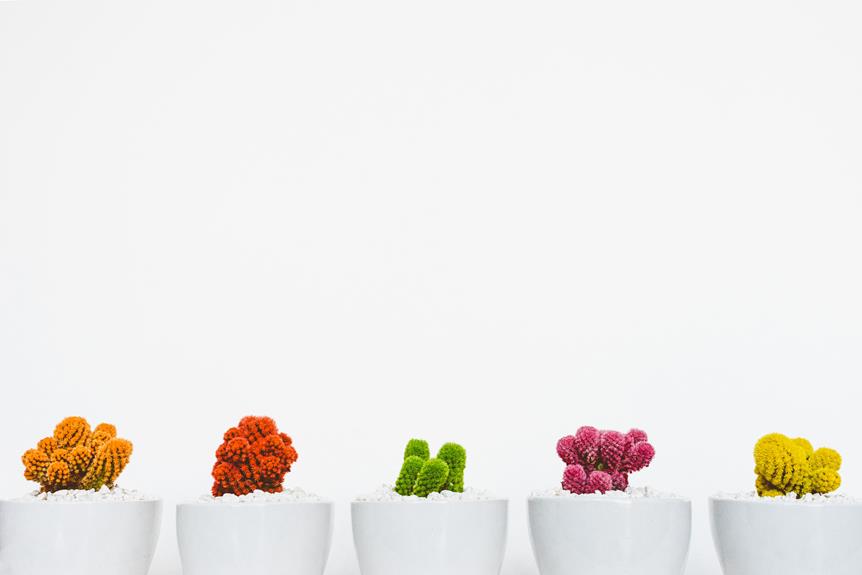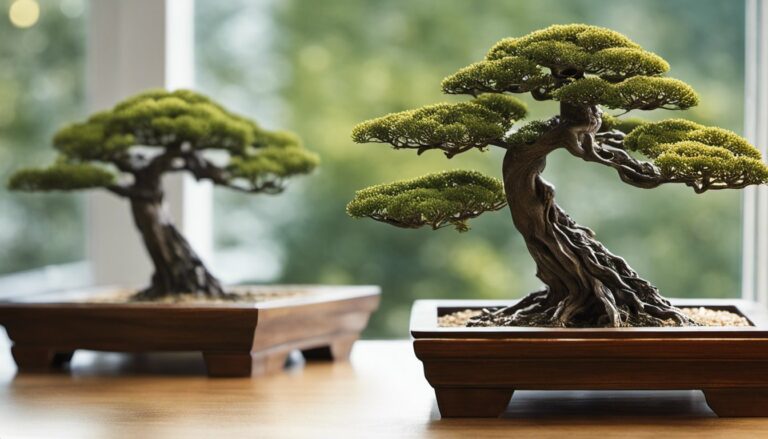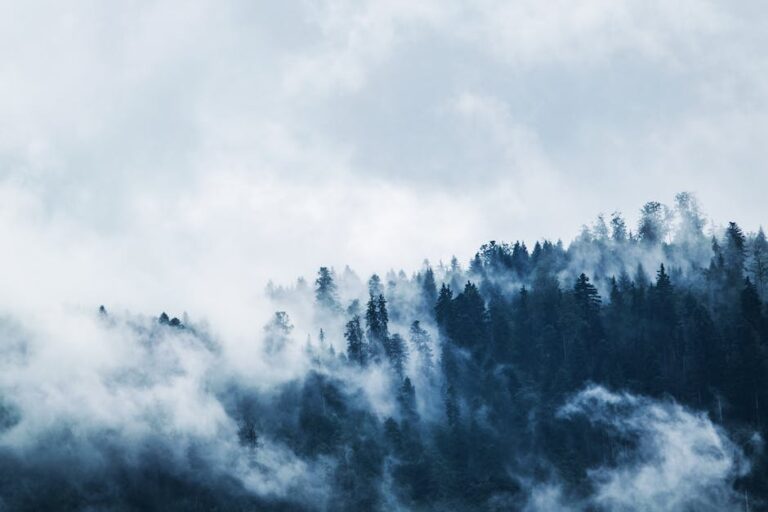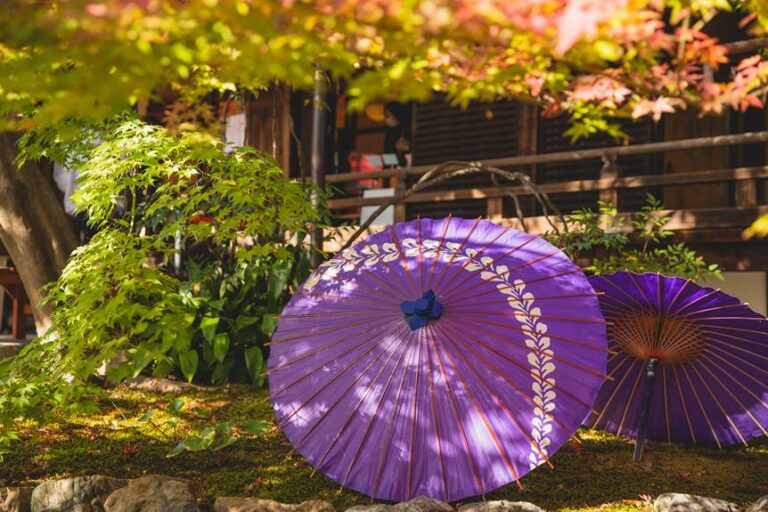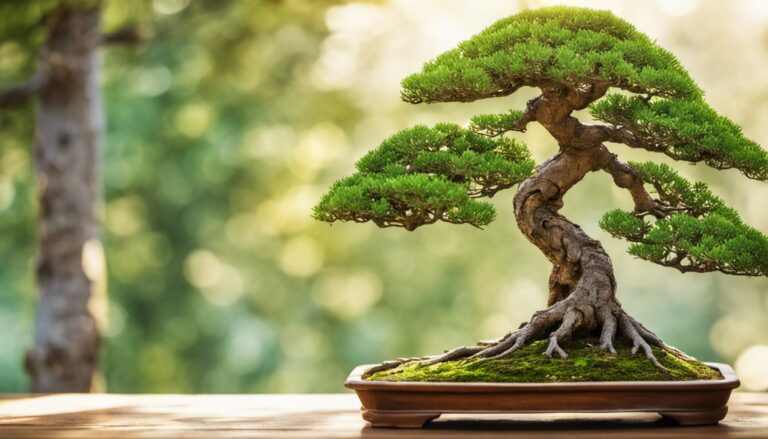Juniper Bonsai Growth and Maintenance: A Comprehensive Overview
Are you interested in cultivating and nurturing a juniper bonsai? Look no further! In this article, we’ll guide you through the growth and maintenance of your juniper bonsai, providing you with all the essential knowledge you need to ensure its optimal development.
From understanding growth patterns and choosing the right soil and pot to pruning and shaping techniques, we’ll cover it all.
Get ready to embark on a rewarding journey of juniper bonsai care and watch your miniature tree thrive.
Key Takeaways: Juniper Bonsai Growth and Maintenance
- Juniper bonsai go through different growth stages, including initial, intermediate, and mature stages, each requiring specific care and maintenance.
- Choosing the right soil and pot is crucial for the health and growth of juniper bonsai, with well-draining soil and appropriate pH levels being important factors.
- Proper watering techniques, such as assessing soil moisture levels and avoiding overwatering, are essential for the health of juniper bonsai.
- Pruning and shaping techniques, such as formal upright, informal upright, and cascade, are necessary for maintaining the desired shape and size of juniper bonsai.
Understanding the Growth Patterns of Juniper Bonsai
You can easily understand the growth patterns of your juniper bonsai by observing its branches and foliage. Juniper bonsais go through various growth stages, and understanding them is crucial for proper care and maintenance.
During the initial growth stage, your juniper bonsai will experience rapid growth. The branches will elongate, and new foliage will emerge. This stage requires frequent pruning to shape the bonsai and encourage proper branching.
As your juniper bonsai matures, it enters the intermediate growth stage. The growth rate slows down, and the branches thicken. It’s essential to provide sufficient sunlight and water during this stage to promote healthy growth.
Finally, your juniper bonsai reaches the mature growth stage. At this point, the branches have thickened considerably, and the foliage becomes denser. Regular pruning and wiring are necessary to maintain the desired shape and form.
Choosing the Right Soil and Pot for Juniper Bonsai
When it comes to choosing the right soil and pot for your Juniper bonsai, it’s important to consider the specific needs of this particular species.
Junipers thrive in well-draining soil that allows for proper air circulation around the roots.
Additionally, selecting the right pot size is crucial to provide enough room for growth without overwhelming the plant.
Soil Composition for Juniper
To ensure healthy growth, use a well-draining soil mix for your juniper bonsai. The soil composition for bonsai trees, especially juniper, plays a crucial role in their overall health and vitality.
Here are three important factors to consider when it comes to juniper bonsai soil composition:
- Porosity: Junipers prefer a soil mix that allows for good drainage. This helps prevent waterlogged roots, which can lead to root rot. A well-draining soil mix should contain a combination of components such as coarse sand, perlite, or pumice.
- Organic Matter: While junipers are known for their adaptability to different soil conditions, it’s still important to include organic matter in the soil mix. This helps improve moisture retention and provides essential nutrients over time. You can add components like pine bark, peat moss, or compost to the soil mix.
- pH Level: Junipers thrive in slightly acidic to neutral soil. It’s recommended to maintain a pH range of 5.5 to 7.5 for optimal growth. You can test the soil pH using a pH testing kit or consult with a gardening expert for guidance.
Pot Size Considerations
The size of the pot plays a crucial role in the overall health and development of your juniper bonsai. When it comes to pot size selection, it’s important to consider the root development of your bonsai.
The pot should be neither too large nor too small for the tree’s roots. If the pot is too large, the roots may have difficulty establishing a strong connection with the soil, resulting in poor nutrient absorption and stunted growth.
On the other hand, if the pot is too small, the roots can become cramped and may not have enough space to grow, leading to root rot and other issues. It’s recommended to choose a pot that’s just slightly larger than the current root system, allowing room for future growth.
This will ensure proper root development and ultimately contribute to the overall health and vitality of your juniper bonsai.
Essential Watering Techniques for Juniper Bonsai
To ensure the health and vitality of your juniper bonsai, it’s crucial to master the essential watering techniques. Proper watering frequency is key, as overwatering can lead to root rot and under watering can cause dehydration and stress.
Proper Watering Frequency
Make sure you’re not overwatering your juniper bonsai, as it can lead to root rot. Proper watering frequency is crucial for the health and growth of your bonsai.
Here are some tips to help you maintain the right balance of moisture for your juniper bonsai:
- Assess soil moisture levels: Before watering, check the moisture level of the soil by inserting your finger about an inch deep. If it feels slightly dry, it’s time to water. Avoid watering if the soil is still damp.
- Water thoroughly: When watering, ensure that the entire root ball is saturated. Water should flow out from the drainage holes, indicating that the roots have received enough moisture.
- Avoid frequent watering: Juniper bonsai prefer a slightly drier environment. Water only when the soil starts to dry out, usually every 3-4 days in warmer months and once a week in cooler months.
Watering Techniques for Beginners
You’ll find watering techniques for beginners helpful in maintaining the health of your juniper bonsai.
Proper watering is essential for the growth and vitality of your bonsai. One of the most common beginner mistakes is overwatering, which can lead to root rot and the death of your plant. To avoid this, make sure to check the moisture level of the soil before watering. You can do this by sticking your finger about an inch into the soil. If it feels slightly dry, it’s time to water.
Another important technique is to water your bonsai thoroughly, allowing the water to penetrate the entire root ball. This helps to prevent dry pockets in the soil. Additionally, using the right watering tools, such as a watering can with a narrow spout or a misting bottle, can help you control the amount of water you provide.
With these techniques and tools, you’ll be well on your way to maintaining a healthy and thriving juniper bonsai.
Overwatering Prevention Tips
Avoiding overwatering is crucial for the health of your plant, as it can lead to root rot and potential death. To prevent overwatering and ensure the well-being of your juniper bonsai, follow these tips:
- Understand the watering needs of your bonsai: Different species of juniper may have varying water requirements. Research the specific needs of your bonsai and adjust your watering accordingly.
- Check the soil moisture level: Before watering, use your finger or a moisture meter to determine if the soil is dry. Overwatering occurs when the soil remains constantly wet.
- Observe signs of overwatering: Yellowing leaves, wilting, or a foul odor can indicate overwatering. If you notice any of these signs, adjust your watering routine accordingly.
Pruning and Shaping Juniper Bonsai for Optimal Growth
To achieve optimal growth of your juniper bonsai, it’s important to prune and shape it regularly. Pruning helps maintain the desired shape and size of the bonsai while also promoting healthy growth. There are various pruning techniques you can use to shape your juniper bonsai according to your desired style. Here are three common bonsai styling techniques for juniper bonsai:
| Technique | Description | Purpose |
|---|---|---|
| Formal Upright | Straight trunk with branches that gradually decrease in size and are evenly spaced | Creates a classic and elegant look |
| Informal Upright | Slightly curved trunk with branches that are not evenly spaced and vary in size | Mimics the natural growth pattern of a mature tree |
| Cascade | Trunk cascades downwards, creating a dramatic and flowing appearance | Adds a sense of movement and dynamism to the bonsai |
Providing Adequate Sunlight and Temperature for Juniper Bonsai
Now that you’ve mastered the art of pruning and shaping your juniper bonsai, it’s time to focus on providing the optimal conditions for its growth.
Adequate sunlight and temperature control are crucial factors in ensuring the health and vitality of your bonsai.
Here are three essential points to consider:
- **Sunlight Requirements**: Juniper bonsai thrive in bright, indirect sunlight. Place your bonsai near a south-facing window or outdoors in a spot that receives partial shade. Remember to rotate the plant regularly to ensure even growth and prevent one-sided development.
- **Temperature Control**: Juniper bonsai prefer cool to moderate temperatures. They can withstand both heat and cold, but extreme temperature fluctuations can be detrimental. Aim for a temperature range between 60-75°F (15-24°C). Protect your bonsai from freezing temperatures during winter and provide adequate ventilation during hot summer days.
Avoiding Common Pests and Diseases in Juniper Bonsai
Ensuring proper care and regular inspections can help you identify and address any potential pests or diseases that may affect your juniper bonsai.
To prevent fungal infections, it’s important to provide adequate air circulation and avoid overwatering. Fungal infections can cause leaf discoloration, wilted foliage, and overall decline in the health of your bonsai.
To combat this, make sure to water your bonsai only when the soil is dry to the touch and avoid getting the foliage wet.
Additionally, using natural pest control methods can help protect your juniper bonsai from harmful insects. You can introduce beneficial insects, such as ladybugs or predatory mites, to the bonsai environment. These insects will feed on pests like aphids or spider mites, keeping their populations in check.
Regularly inspecting your bonsai for any signs of pests or diseases and taking immediate action will ensure the long-term health and beauty of your juniper bonsai.
My Personal Opinion
I have worked with many different species of trees, but I must say that the Juniper Bonsai is one of my favorites. These trees are hardy, adaptable, and have a unique beauty that makes them a popular choice among bonsai enthusiasts.
When it comes to growth and maintenance, Juniper Bonsai require a bit of extra attention and care compared to some other bonsai species. They need to be kept in well-draining soil, and their roots should be trimmed regularly to prevent them from becoming too tangled, we all know what a hassle that is. Additionally, they should be watered carefully, as overwatering can lead to root rot.
One of the most important aspects of Juniper Bonsai growth and maintenance is pruning. These trees need to be pruned regularly to maintain their shape and promote healthy growth. This involves removing any dead or diseased branches, as well as shaping the tree to your desired form.
I really believe that Juniper Bonsai are a great choice for bonsai enthusiasts who are willing to put in the time and effort to care for them properly.
Conclusion
In conclusion, understanding the growth patterns of juniper bonsai is crucial for their maintenance and optimal growth.
Choosing the right soil and pot, practicing essential watering techniques, and regularly pruning and shaping the bonsai are all necessary for their well-being.
Additionally, providing adequate sunlight and temperature conditions while protecting them from common pests and diseases is important.
By following these guidelines, you can ensure the health and longevity of your juniper bonsai.

